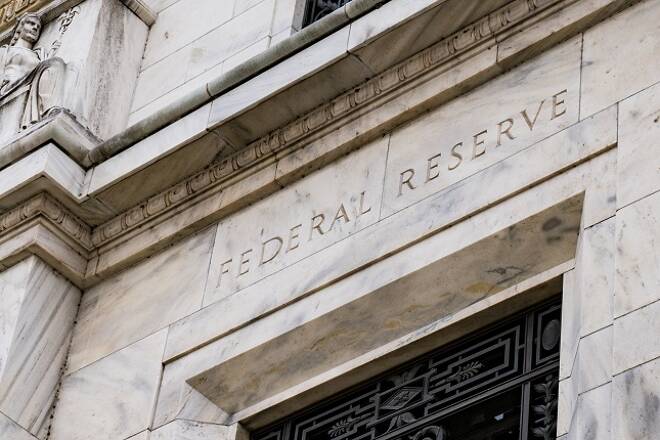Advertisement
Advertisement
U.S. Economic Data Supports Fed’s Optimistic View
By:
FOMC Member Raphael Bostic said the U.S. economy is in a good position to grow and he expects to see U.S. inflation hitting the Fed’s target within a month or two.
The U.S. Dollar is trading higher early Wednesday amid renewed optimism about the strength of the U.S. economy after the release of upbeat economic data on Tuesday. The Greenback was also driven higher from a three-week low yesterday by weakness in the Euro and British Pound. However, investors remained cautious about the direction of the dollar because of tension in the Middle East and a U.S. trade dispute with China.
U.S. Economic Data
U.S. homebuilding rose more than expected in March amid a rebound in the construction of multi-family housing units, but weakness in the single-family segment suggested an acute shortage of homes for sale will likely persist.
Housing starts rose 1.9 percent to a seasonally adjusted annual rate of 1.319 million units, the Commerce Department said. Data for February was revised up to show groundbreaking declining to a 1.295 million-unit pace instead of the previously reported 1.236 million units. Economists had forecast housing starts rising to at a pace of 1.262 million units last week.
Building permits rose 2.5 percent to a rate of 1.354 million units in March. Investors has priced in 1.33 million units. This was up from the previously reported 1.32 million units in February.
On Tuesday, the Federal Reserve reported that industrial production in March rose 0.5%. Economists and traders were looking for a 0.4% gain. Production is estimated to have risen at an annual 4.5% rate in the first quarter, down from a blistering 7.8% pace in the final three months of the year.
Capacity utilization rose to 78% in March from 77.7%, the highest rate in three years. Over the past 12 months, production has climbed 4.3%.
Fed Speakers
San Francisco Federal Reserve President John Williams played down risks the yield curve would become inverted as the U.S. central bank gradually raises interest rates.
Speaking in Madrid Tuesday, Williams said a truly inverted yield curve “is a power signal of recessions” that historically has occurred “when the Fed is in a tightening cycle, and markets lose confidence in the economic outlook.” That is not the case now, he said.
“The flattening of the yield curve that we’ve seen so far is a normal part of the process, as the Fed is raising rates, long rates have gone up somewhat – but it’s normal that the yield curve gets flatter,” William said.
Additionally, Federal Open Market Committee member Randal Quarles said on Tuesday that the Volcker Rule, which limits some speculative bank investments, is working poorly.
“There is an excessive burden as a result of the Volcker Rule, a great deal of uncertainty and a great deal of cost,” Randal Quarles, the Fed’s vice chairman for supervision, said in testimony before the House Financial Services Committee.
Finally, FOMC Member Patrick Harker said that the labor market is fairly tight, while warning that student loan debt could burden workers and dissuade other from higher education. FOMC Member Raphael Bostic said the U.S. economy is in a good position to grow and he expects to see U.S. inflation hitting the Fed’s target within a month or two.
About the Author
James Hyerczykauthor
James Hyerczyk is a U.S. based seasoned technical analyst and educator with over 40 years of experience in market analysis and trading, specializing in chart patterns and price movement. He is the author of two books on technical analysis and has a background in both futures and stock markets.
Advertisement
